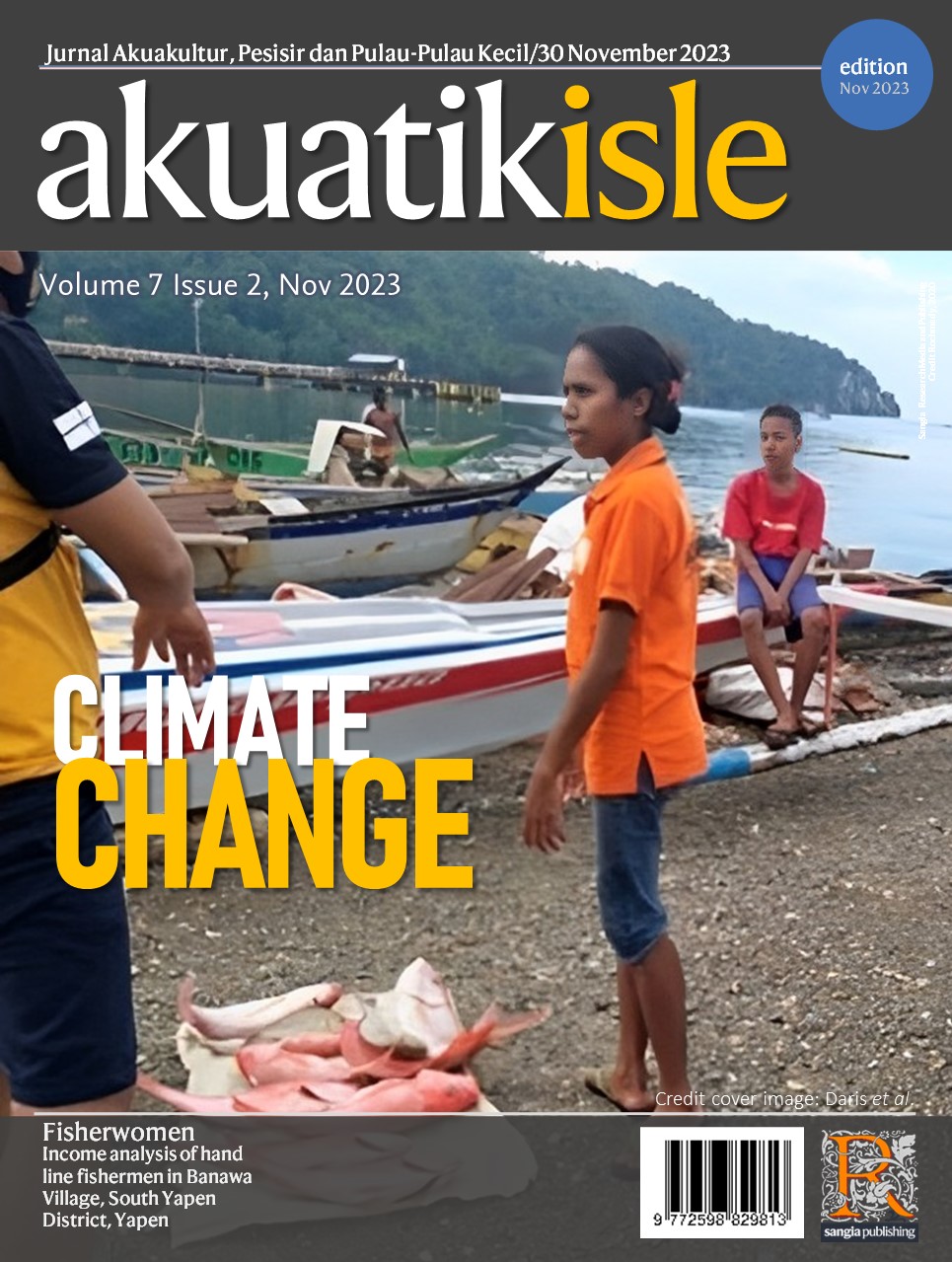Akuatikisle: Jurnal Akuakultur, Pesisir dan Pulau-Pulau Kecil
Full Length Article
Survival rate of tiger shrimp (Penaeus monodon) pre and post infected with White Spot Syndrome Virus (WSSV) fed with the addition of miana leaf extract (Coleus scutellarioides)
Highlights
Generate NLP AI by Wizdam ID.
Abstract
The plant species of miana (Coleus scutellariodes) has been historically recognised for its antiviral properties. However, there is currently no scientific evidence supporting the efficacy of miana leaf extract in preventing White Spot Syndrome Virus (WSSV) in tiger prawns (Penaeus monodon) when administered via feed. This study aimed to determine the impact of including miana leaf extract in the diet on the survival percentage of tiger prawns that have been infected with the WSSV. The study was carried out between June and August 2023 in the Laboratory of Parasite and Fish Disease and the Hatchery Laboratory of Hasanuddin University. This study employed a completely randomized experimental design consisting of five distinct treatments, each with three replicates. The experimental treatments included the control group (treatment A), where food was provided without the inclusion of miana leaf extract. Furthermore, there were four treatment groups (treatments B, C, D and E) where feed was supplemented with miana leaf extract at concentrations of 125, 250, 500, and 750 µg mg-1 feed, respectively. Rearing was performed in two phases: preinfection (25 days) and post- infection (7 days). The statistical results of the statistical on pre-WSSV infection indicated that the addition of miana leaf extract to the food resulted in survival that was not significantly different (p>0.05). The results were different post-infection, significantly (p<0.05) the shrimp fed with the addition of miana leaf extract were higher than those without the extract. Furthermore, there was a significant difference in shrimp survival between pre- and post-WSSV infection. WSSV mitigation through immunostimulants using miana leaf extract, which is inexpensive and environmentally friendly, has the potential to minimize the impact of WSSV infection.
Keywords
Introduction
Section snippets
Material and Methods
Materials and methods from the full-text PDF of this article cannot be displayed.
Results
Results from the full-text PDF of this article cannot be displayed.
Discussion
Discussion from the full-text PDF of this article cannot be displayed.
Conclusions
Conclusions from the full-text PDF of this article cannot be displayed.
Acknowledgment
Acknowledgment from the full-text PDF of this article cannot be displayed.
Competing interest
The authors declare that they have no known competing financial interests or personal relationships that could have appeared to influence the work reported in this paper.
Conflict of interest
The authors declare that the research was conducted in the absence of any commercial or financial relationships that could be construed as a potential conflict of interest.
Ethical approval acknowledgements
No ethical approval required for this article. All procedures followed were in accordance with the ethical standards of the responsible committee on human experimentation (institutional and national) and with the Helsinki Declaration of 1975, as revised in 2008 (5)
Supplementary files
Data sharing not applicable to this article as no datasets were generated or analysed during the current study, and/or contains supplementary material, which is available to authorized users.
Bibliographic Information
Cite this article as:
-
Submitted
1 October 2023 -
Accepted
6 November 2023 -
Published
7 November 2023 -
Version of record
28 November 2023 -
Issue date
30 November 2023
-
Academic subject
Aquaculture; Biological Science
Copyright
Copyright © 2023 Keky Febriani, Buana Basir, Heriansah. Sangia Research Media and Publishing. Production and hosting by Sangia (SRM™).  This work is licensed under a Creative Commons Attribution-ShareAlike 4.0 International License.
This work is licensed under a Creative Commons Attribution-ShareAlike 4.0 International License.
Disclaimer: All claims expressed in this article are solely those of the authors and do not necessarily represent those of their affiliated organizations, or those of the publisher, the editors and the reviewers. Any product that may be evaluated in this article or claim that may be made by its manufacturer is not guaranteed or endorsed by the publisher.
Comments on this article
By submitting a comment you agree to abide by our Terms and Community Guidelines. If you find something abusive or that does not comply with our terms or guidelines please flag it as inappropriate.


